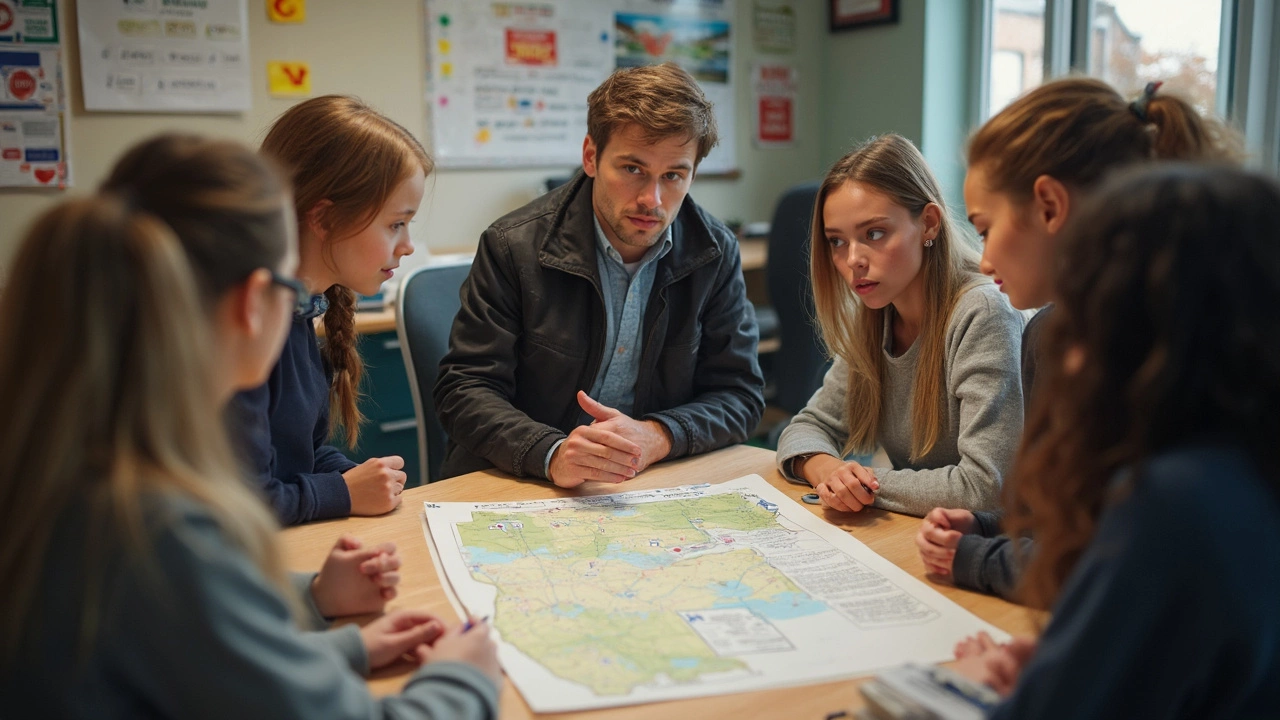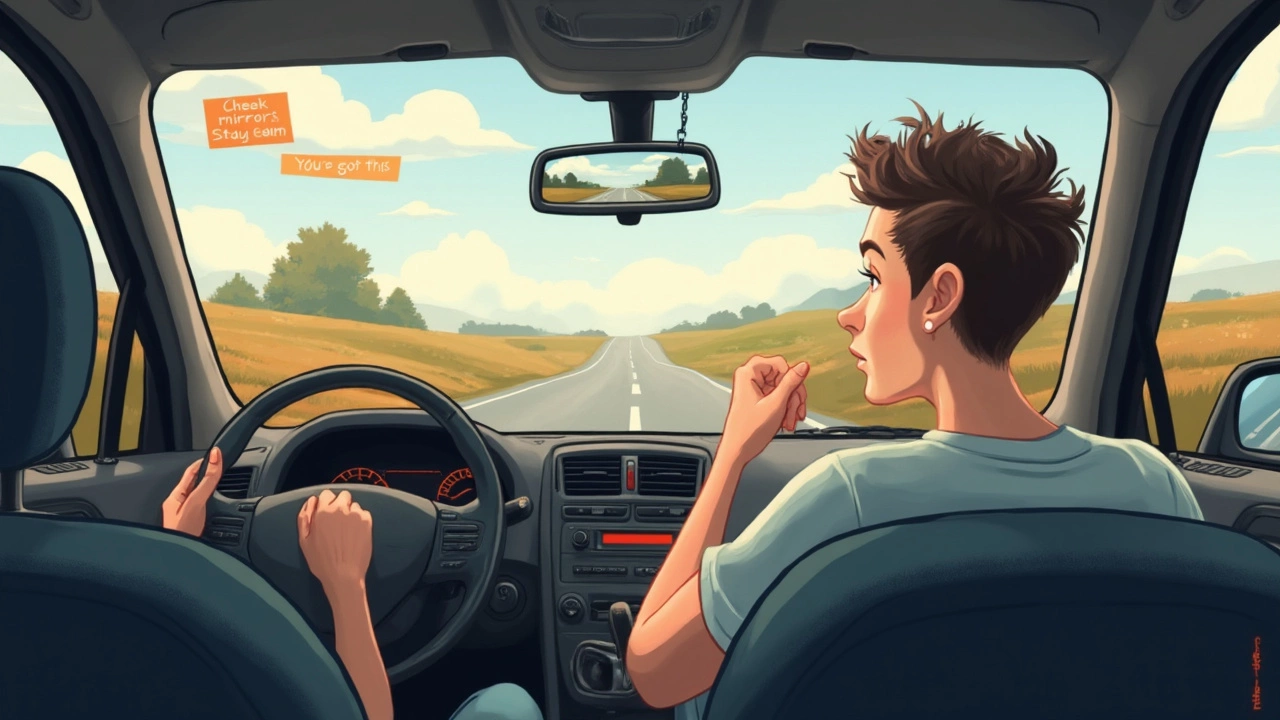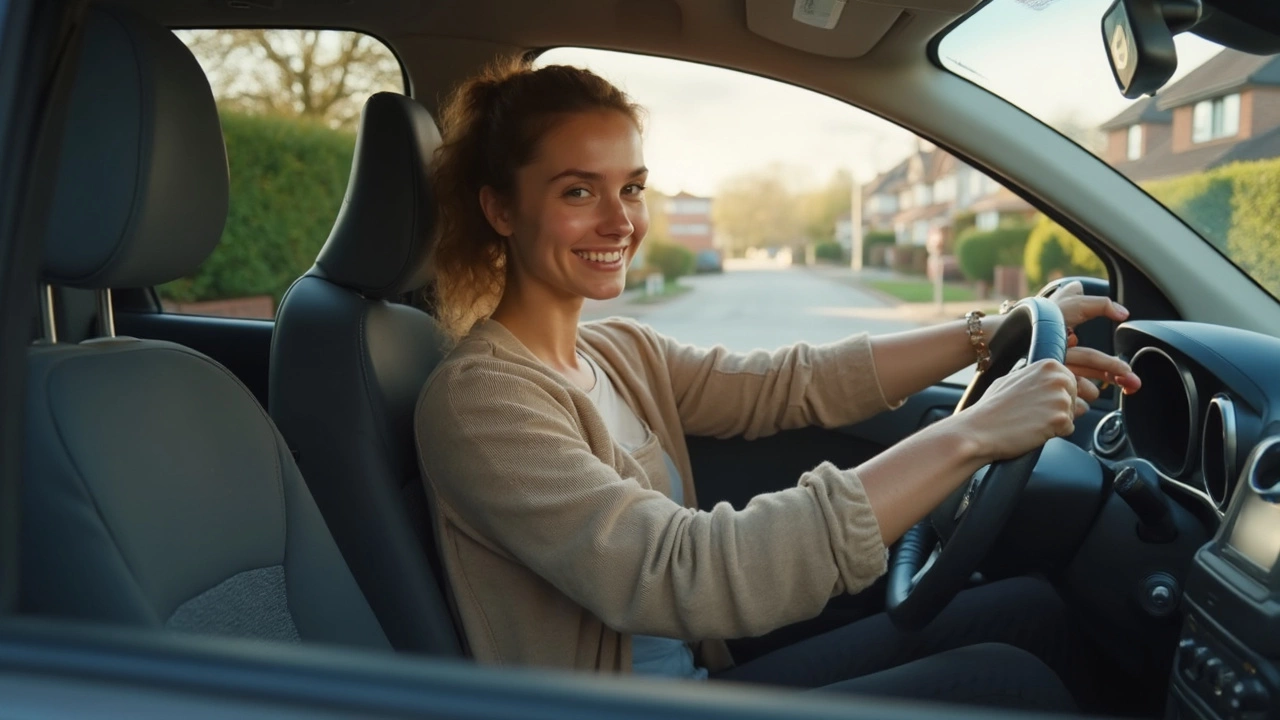Sitting in the driver’s seat for the first time can feel like launching a spaceship, but it doesn’t have to be overwhelming. Take a deep breath. Nobody is born knowing how to drive. The trick is knowing what to expect and keeping your nerves in check.
Before anything else, grab your learner’s permit—trust me, there’s nothing more awkward than getting pulled over on your first go. Find a quiet parking lot or an empty stretch of road to practice. You don’t want your first encounter with a steering wheel to include honking horns or impatient drivers breathing down your neck.
Double-check your seat and mirrors. It’s simple but makes all the difference. If you can barely see over the dash or have to squint at mirrors, you’re starting off at a disadvantage. Taking a few seconds to get comfortable means less scrambling when you’re actually moving.
- Getting Ready Before You Start
- Understanding the Car’s Controls
- Getting Moving: Step-by-Step
- Staying Safe and Calm
- What to Do After Your First Drive
Getting Ready Before You Start
Before you even put your hands on the wheel, there’s some groundwork you need to cover. A lot of rookie mistakes happen before the car even moves, so let’s knock out the basics. The most obvious thing: make sure you have your learner’s permit with you. In most places, driving without it—even in a parking lot—can lead to a fine or worse.
Next up, check your paperwork. That means your car’s insurance, registration, and a licensed adult or instructor riding shotgun. Most states require an adult with a valid license to be present when you drive with a permit.
The environment you choose for your first drive makes a huge difference. Steer clear of rush hour or busy intersections. A study by the National Highway Traffic Safety Administration found that 45% of first-time driver accidents occur on busy roads. Your best bet? Go for a quiet, open parking lot or a back road with barely any traffic.
Don’t just hop in and start the engine. You’ll want to wear comfortable shoes (lose the flip-flops—they can get caught under the pedals). Take out anything from your pockets that might bug you while sitting, and leave your phone on silent or in the glove box to avoid distractions.
- Check that the driver’s seat is high and close enough for you to see well and reach the pedals.
- Adjust all three mirrors—rearview and both side mirrors—so you get a wide view with no big blind spots.
- Buckle up. Sounds basic, but you’d be surprised by how many people skip this when nervous or distracted.
- Take a deep breath and remind yourself that it’s okay to go slow.
Most important of all: don’t rush. Setting up takes just a couple of minutes, but it can save you a ton of stress once you hit the gas. Being prepared builds confidence way before you start driving.
Understanding the Car’s Controls
If you want to actually drive a car for the first time, you need to know what all those buttons, pedals, and levers do. It’s not as complicated as it looks. Most cars—even new ones—keep the basics in the same spots.
Let’s break down the essentials:
- Steering wheel: Turns the car left or right. Always keep both hands on it, usually at the 9 and 3 o’clock positions.
- Pedals: There are two (automatic) or three (manual) pedals. Right pedal is the accelerator (makes the car move). Left pedal is the brake (stops you). If there’s a third pedal on the far left, that’s the clutch—only in manual cars.
- Gear shifter: In automatics, you’ll see “P, R, N, D.” Park, Reverse, Neutral, and Drive. Manuals have gears marked with numbers. Always start in Park or Neutral.
- Mirrors: Rearview mirror and side mirrors help you see behind and beside you. Adjust them so you don’t need to lean or twist your neck too much.
- Turn signals: Usually a lever on the left of the steering wheel. Push up for right, down for left.
- Windshield wipers: Typically on a stalk to the right of the wheel. Twist or push for different speeds.
- Lights: Most light controls are on a switch near the steering wheel. Know how to flip on your headlights, especially if it’s cloudy or getting dark.
- Parking brake: Sometimes a lever next to your seat, sometimes a pedal, or a button. Always make sure it’s off before driving and on when you park.
Here’s a quick glance at how often you’ll use each control on a regular driving lesson:
| Control | How Often Used |
|---|---|
| Steering wheel | Constantly |
| Pedals (accelerator & brake) | Every moment in motion |
| Gear shifter | At start, stop, reversing |
| Turn signals | Every turn/lane change |
| Mirrors | Frequently for checking surroundings |
| Parking brake | When starting and parking |
Memorizing what each control does will make your first driving experience way smoother. Don’t be afraid to sit in a parked car and just get familiar—turn things on and off, see how they feel, and ask questions if you get stuck. Knowing your car inside out means less panicking, more confident moves on the road.

Getting Moving: Step-by-Step
When it's finally time to put the car in motion, sticking to a simple routine helps keep nerves under control and mistakes to a minimum. Here’s how most instructors walk you through it—yes, even if it feels basic, trust the process.
- Seatbelt on. Don’t skip this. It’s second nature for experienced drivers, and you don’t want to risk a ticket or your safety.
- Foot on brake. Make sure the car is in park (P) or neutral (N) if it's manual. Firmly press the brake with your right foot.
- Start the engine. Most modern cars use a push-button; older ones will need the key. It doesn’t roar to life—expect a quiet hum.
- Check your mirrors and surroundings. Don’t just rely on the mirrors; glance over your shoulder too. Blind spots are sneaky.
- Shift into drive (for automatics) or first gear (if you’re using a manual). Keep your foot on the brake as you do this.
- Release the parking brake. It’s easy to forget. Leaving it on may cause a weird feeling when the car refuses to move.
- Gently ease off the brake. The car will usually start rolling even before you touch the gas—this is totally normal with automatics. If you're driving a manual, you’ll slowly release the clutch while pressing the gas, but do it calmly or you’ll stall.
- Accelerate slowly. Light pressure on the pedal is all you need. Don't mash it—nobody looks cool lurching forward at 20 mph in a parking lot.
- Hands on the wheel, usually at "9 and 3" positions. This offers better control if you need to react quickly.
Be aware of your speed. Beginner drivers often underestimate how quickly you can hit 20 mph—especially in an open lot. If your hands or legs feel shaky, pause for a second and breathe. Remember, the goal is smooth and steady, not fast.
Did you know? According to the National Safety Council, beginner drivers are most likely to make errors when rushing the basics, like not checking mirrors or forgetting the parking brake. Taking it step by step lays the foundation for every future drive, no matter if you’re on a city street or a highway later on.
Staying Safe and Calm
Keeping steady hands on the wheel is the only way you’ll learn to enjoy driving for the first time. Nerves are normal, but freakouts are optional. Most beginners feel a bit jumpy, but having a plan for your first few driving lessons helps more than you’d think.
Start every session by reminding yourself of these basics:
- Seatbelt on—always. It might sound obvious, but it’s the first layer of protection you have. Even a quick drive in a parking lot calls for it.
- Slow down. Rushing makes mistakes way more likely. Keep your speed under control, especially when you’re starting out. Most experts agree new drivers are safest well below 25 mph in practice areas.
- Keep both hands on the wheel. The ‘9 and 3’ position (think where your hands would be on a clock) gives you the best control, and it's what every instructor pushes for.
- Check mirrors often. Even if there’s nobody else around, making this a habit from your first drive pays off big time later.
- Block out distractions. Phone in the glovebox, radio off, and ask your passenger to save detailed advice for after you park. One recent US study found that distracted drivers are nearly three times as likely to crash, even during a first driving lesson.
Here’s a table to help calm those beginner jitters. These are quick fixes for common worries:
| Worry | What Helps |
|---|---|
| Nervous about stalling | Practice easing off the brake and pressing the gas slowly—in an empty area |
| Forgetting what to do next | Go slow, talk yourself through each step out loud |
| Scared of other cars | Stick to quiet places until you’re ready for traffic |
Don’t beat yourself up over small mistakes. Everyone has rough starts, scraped bumpers, or missed turns. The more you practice, the less they happen. Focus on building confidence and keeping every driving session as chill as possible.

What to Do After Your First Drive
Done with your first driving experience? Before hopping out and celebrating, run through a few simple steps to wrap up the day right. This isn’t just about parking and leaving; it’s about building good habits from day one.
First off, park the car safely and turn off the engine. Always pull the handbrake, especially if you’re on a hill or even a slight slope. Leaving the car in gear (first for manual, ‘P’ for automatic) is a smart backup move. Then, go through this quick checklist:
- Take a second to look over the car for any dings or scratches you didn’t notice earlier. Better to spot them now than later.
- Make sure you’ve got all your belongings. Phones, wallets, and even that water bottle you shoved in the cup holder can be forgotten easily.
- If you borrowed the car, let the owner know how it went. Give them honest feedback about anything weird you noticed (like squeaky brakes or a grinding gearshift).
Your first driving lesson isn’t just about what happens in the car—it’s how you learn from it once you’re done. Jot down a few thoughts on what felt tricky. Was it making turns? Was it keeping your speed steady? When you review this stuff, you’ll see progress sooner.
According to the U.S. National Highway Traffic Safety Administration, new drivers are involved in more than 20% of accident reports simply because of lack of experience. Most of these accidents are preventable with just a bit of review and practice. So, the more you think about your session, the safer you’ll become behind the wheel.
Next, discuss your drive with a friend, instructor, or a family member. Even just saying out loud what confused you can help make it clearer the next time. Planning your next practice session? Focus on one tricky thing at a time. For example, if smooth stops were hard, spend extra time on them next round.
And last but not least, give yourself some credit. Every first time driving story comes with shakiness—yours is just the beginning of something bigger. Each drive builds confidence and skill. You’re no longer a total beginner, so keep that in mind as you prep for your next trip.

